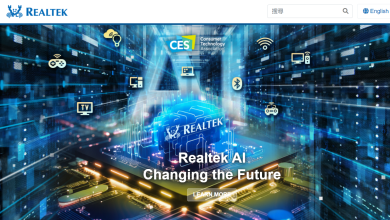Fix: Bluetooth Headset Cannot Be Used as Both Headphones and Speakers
Audio on a Bluetooth headset often stops working as soon as the microphone turns on during a call or meeting. This is because Windows cannot use both high-quality audio (A2DP) and the microphone (HFP/HSP) together. Bluetooth technology only allows one mode at a time—either clear stereo sound or voice input with the mic.
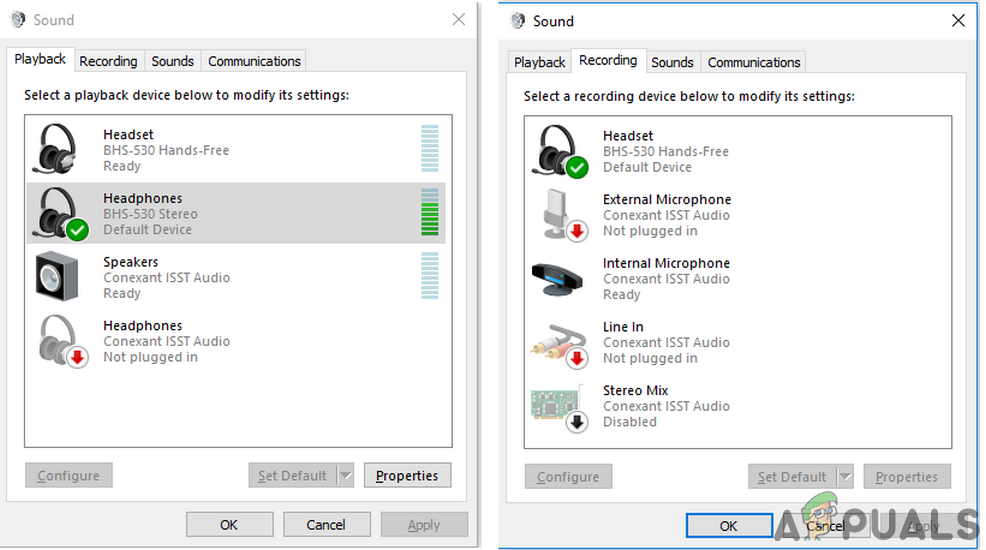
Other possible reasons include outdated Bluetooth drivers, headset issues, or the wrong audio device chosen in your settings.
1. Run the Audio Troubleshooter
If your system’s audio settings are misconfigured or if there’s a glitch, your Bluetooth headset may not work as expected. Running the built-in Windows Audio Troubleshooter can often find and fix the issue.
- Press Windows + Q to open Windows Search and type Settings. Click on Settings in the search results.
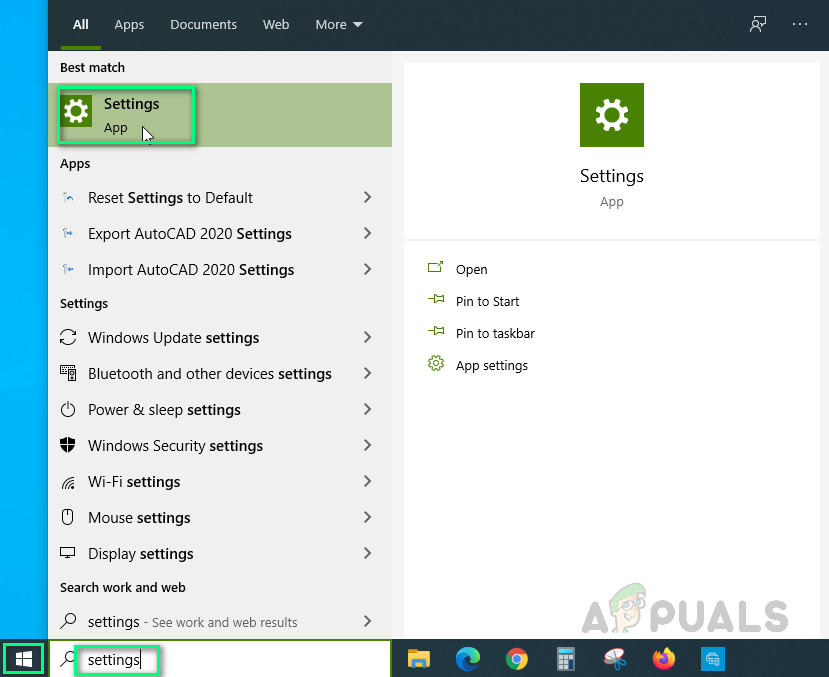
Opening Windows Settings - Select Update & Security, then click Troubleshoot on the left panel.
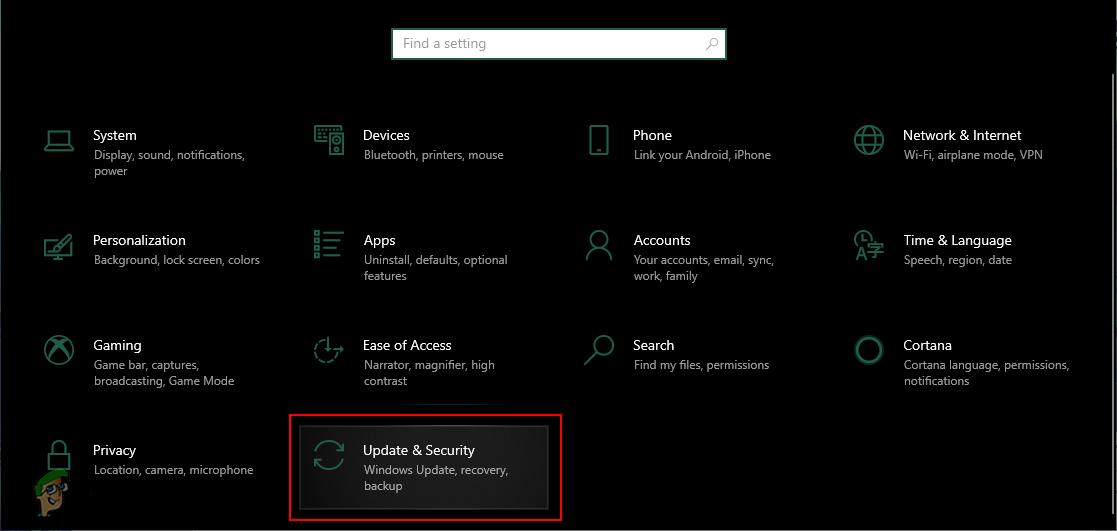
Opening Updates & Security settings - On the right, click Additional Troubleshooters, then expand Playing Audio under “Get Up and Running”.

Navigating Additional Troubleshooters - Click Run the Troubleshooter and follow the on-screen instructions to complete the process.
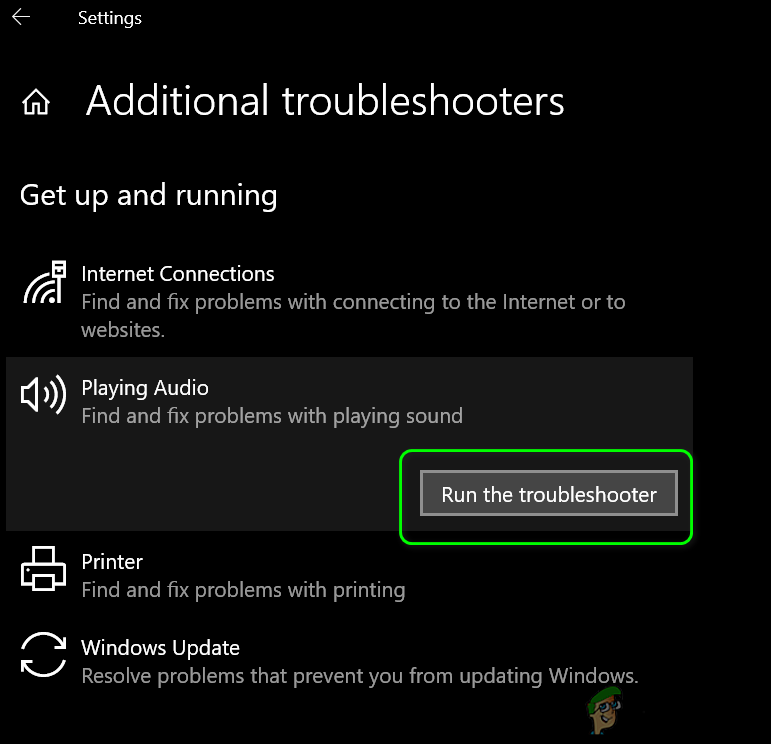
Launch Playing Audio Troubleshooter - Check if your Bluetooth headset is now working as it should.
- If not, go back to the Additional Troubleshooters window (steps 1-3) and expand Recording Audio under “Find and Fix Other Problems.”
- Click Run the Troubleshooter and follow the prompts to finish the process.
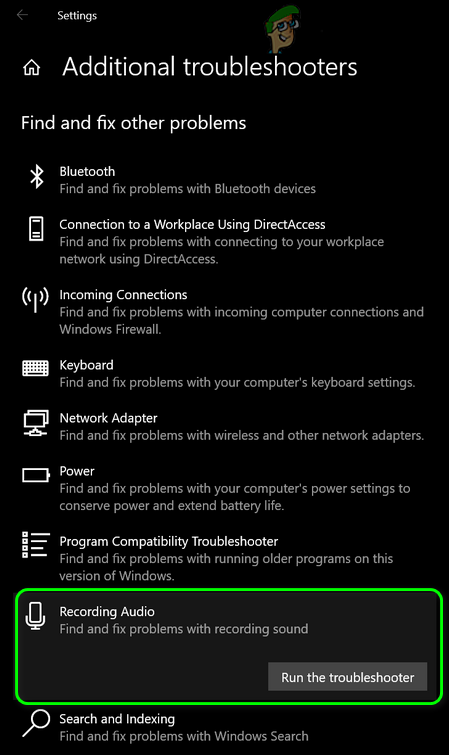
Launch the Recording Audio Troubleshooter - Then check if your Bluetooth headset is working correctly.
2. Change the Icon of the Headset in System Settings
If your Bluetooth headset is identified as a speaker or another device type, it might not function properly. Changing the device icon in your system settings to a headset can help fix this problem.
- Open the Windows Search bar by pressing Windows + Q and type Control Panel. Click on Control Panel in the results.
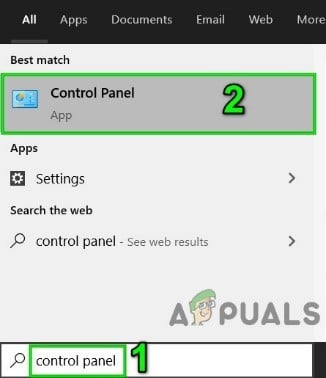
Open Control Panel - Click Hardware and Sound, then choose Sound.

Sound in Control Panel - Right-click your headset (if it’s incorrectly labeled) and choose Properties.
- Click the Change Icon button, then select the headset icon from the list.
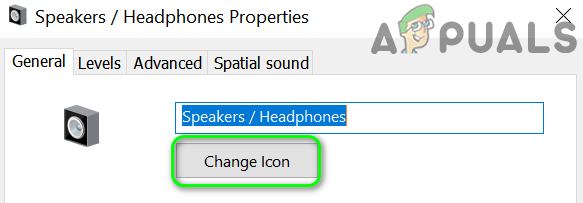
Click on the Change Icon Button - Apply your changes and check if your headset now works properly.
3. Disable Microsoft Bluetooth LE Enumerator
The Microsoft Bluetooth LE Enumerator helps manage Bluetooth devices, but some headsets that don’t use Bluetooth Low Energy can experience issues if this feature interferes. Disabling it might resolve the problem.
- Unpair your headset from your system.
- Right-click the Windows button and select Device Manager.
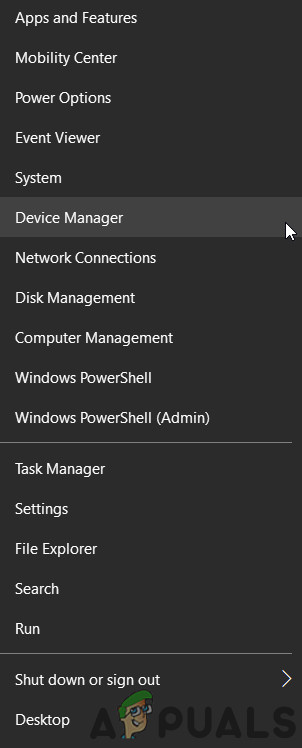
Open Device Manager - Expand the Bluetooth section and right-click on Microsoft Bluetooth LE Enumerator.
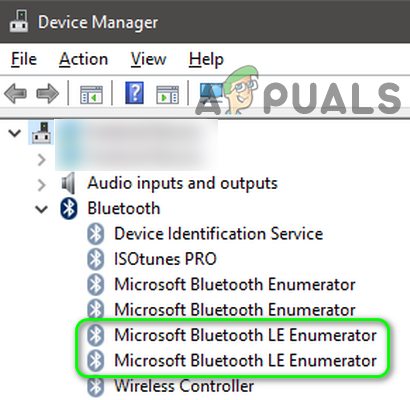
Disable Microsoft Bluetooth LE Enumerator - Select Disable Device, then confirm (you can ignore any warning message).
- Restart your computer, pair your headset again, and check if it’s working.
4. Disable/Enable the Bluetooth Device’s Services
Temporary issues in the Bluetooth device’s services can cause headset problems. Disabling and then enabling these services can sometimes clear out any glitches.
- Click the Windows button, type Control Panel in the search bar, and select Control Panel.
- Under Hardware and Sound, choose Devices and Printers.
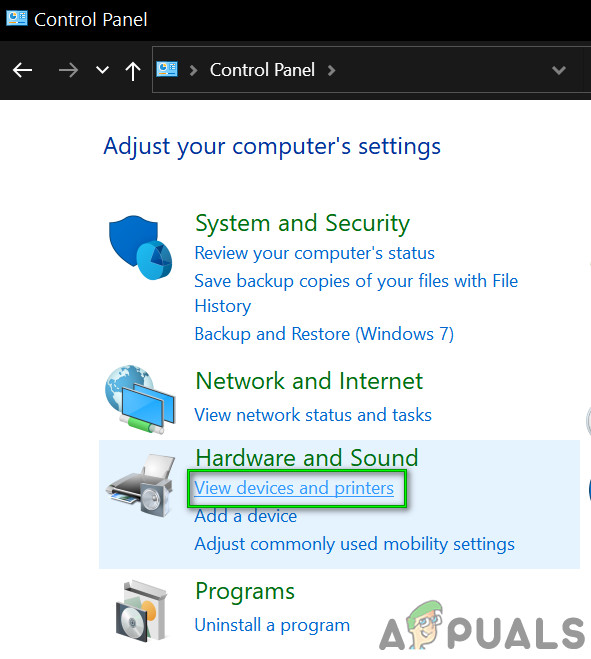
Open Devices And Printers - Right-click your Bluetooth headset and select Properties.
- Go to the Services tab and uncheck every service there.
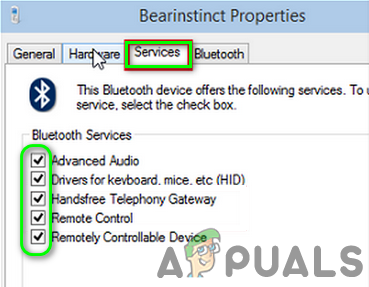
Disable Bluetooth Services of the Headset - Click Apply/OK. Then repeat the process to re-enable the services.
- Check if this resolved the headset problem.
- If not, go back to the Services tab (steps 1–3), and only disable the Telephony service.
- Click Apply/OK and check if the problem is gone.
- If the issue remains, try disabling the Playback service and check for improvements.
- If that still doesn’t work, open the Properties window for your Bluetooth device, and switch to the Ports tab.
- Try enabling or disabling the ports one by one (you may need to select your device from a dropdown list), then check if your headset starts working.
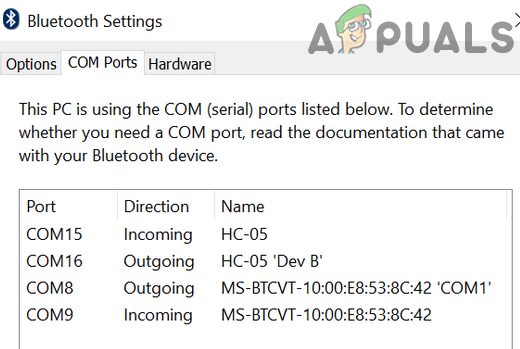
Disable the Bluetooth Com Ports
5. Disable Applications’ Exclusive Control Over Sound Devices
Certain applications may try to take exclusive control of your sound devices, which can interfere with your Bluetooth headset’s normal operation. Disabling this exclusive access often helps.
- Press Windows + Q to search for Control Panel, then select it.
- Open the Hardware and Sound category, then click Sound.
- Right-click your headset under the Playback tab and select Properties.
- Go to the Advanced tab and uncheck Allow Applications to Take Exclusive Control of This Device.
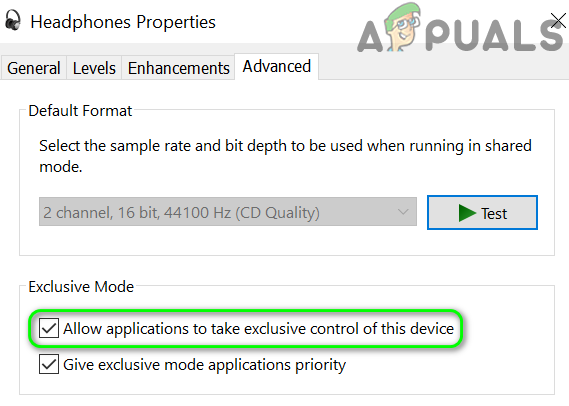
Uncheck the Option of Allow Applications to Take Exclusive Control of This Device - Click Apply/OK. For best results, disable any sound devices not in use (in both Playback and Recording tabs).
- On the Recording tab, right-click your headset mic.
- Select Disable, then check if the headset is working normally now.
6. Select the Correct Mode for Your Bluetooth Headset
Your system may display your Bluetooth headset as two devices: headphones and headset/handsfree. If you use the wrong mode for your needs, your audio or microphone might not work. Picking the correct mode—and disabling the other—can help.
- Press Windows + Q to launch Windows Search and type Control Panel. In the results, click Control Panel.
- Open Hardware and Sound, then click Sound.
- Right-click the headphone entry and choose Disable (in both the Playback and Recording tabs).
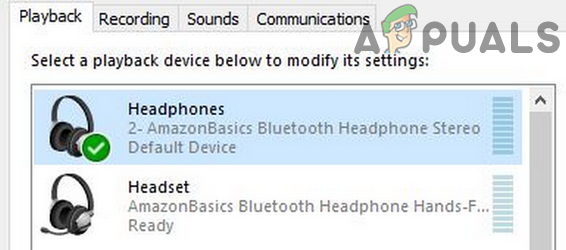
Disable the Headphone - Check if this has resolved the headset issue.
- If not, right-click the handsfree/headset entry in the Playback and Recording tabs and set it as the Default Device.

Set the Headset as Default - See if your Bluetooth headset is now working as it should.
- If the issue continues, disable the headset (not the headphone) and set the headphone as the default device (repeat steps 3–7).
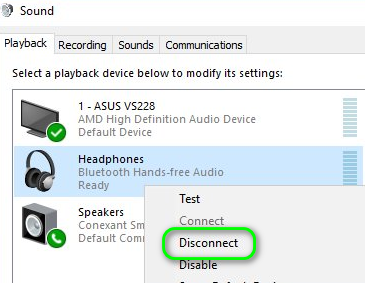
Disconnect Headphones - If this hasn’t helped, go to the Recording tab in the Sound settings (step 1–2), right-click your headset, then select Properties and open the Levels tab.
- Increase the headset’s volume slider to 100% and see if that resolves the issue (you might need to try this more than once). If successful, feel free to adjust the volume back to your preferred level.
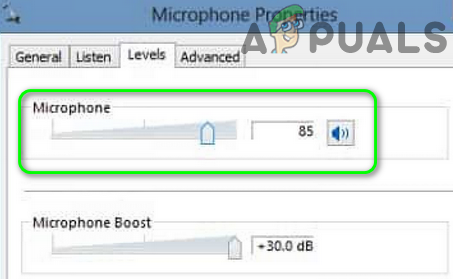
Increase Mic Volume to 100%
7. Reinstall Your Bluetooth Drivers
If your Bluetooth headset still isn’t working, the driver may be out of date or corrupted. Reinstalling the Bluetooth drivers can often resolve compatibility and connection problems. If you use a sound manager (like Realtek), consider removing it temporarily to check if that helps.
- Download the latest Bluetooth drivers for your system from your manufacturer’s website.
- Unpair all Bluetooth devices from your headset.
- Press Windows + Q to search for Settings. Open Settings from the search results and go to Devices.
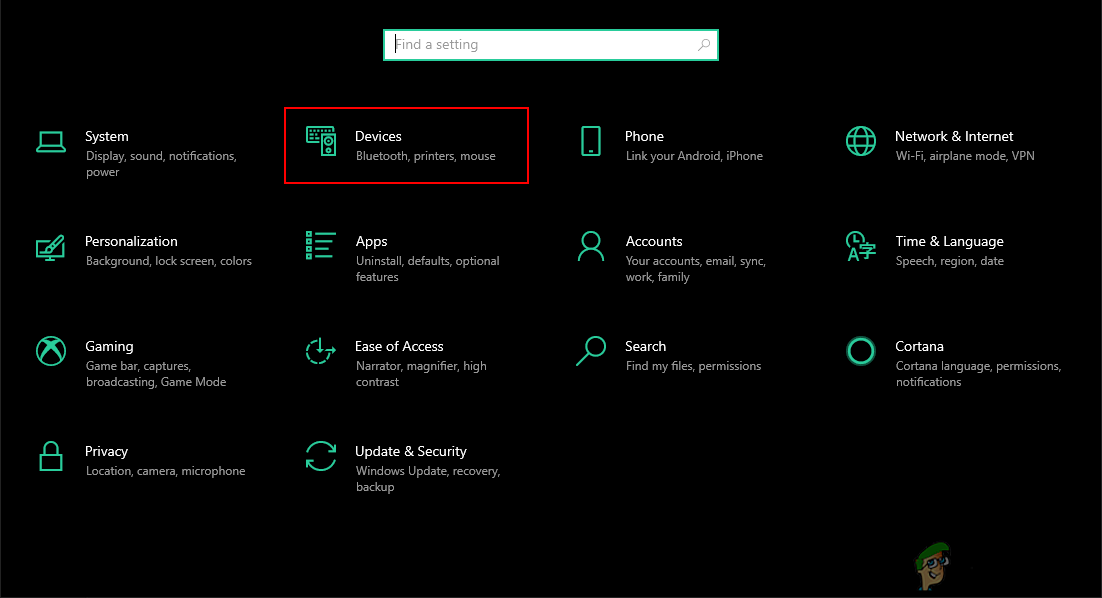
Opening Devices setting in the Windows Settings - Select the problematic Bluetooth device and click Remove Device.
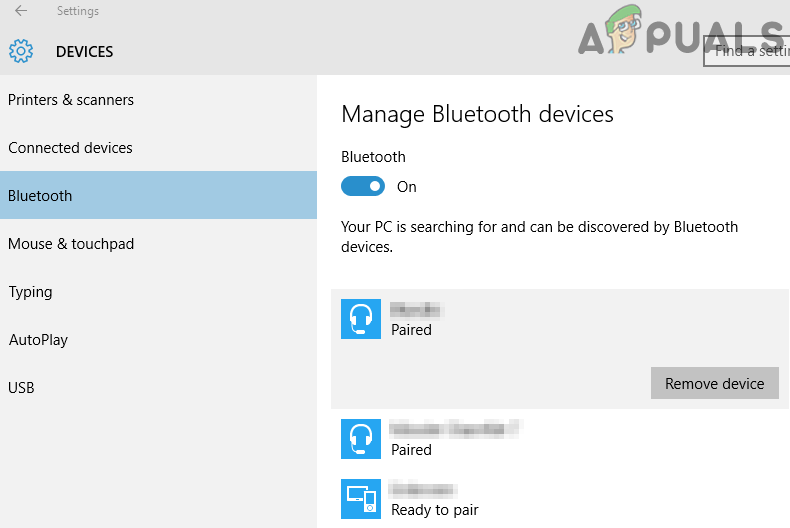
Remove the Bluetooth Device - Confirm the removal and restart your system.
- After restarting, right-click the Windows button and select Device Manager.
- In Device Manager, open the View menu, then click Show Hidden Devices.
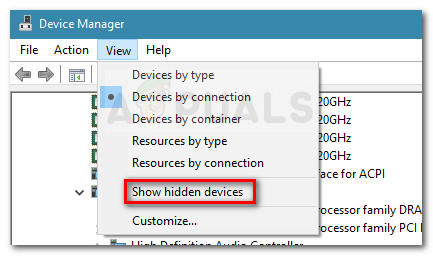
Show hidden devices - Expand Bluetooth, then right-click your Bluetooth adapter or device.
- Select Uninstall Device and check the option to Delete the Driver Software for This Device.
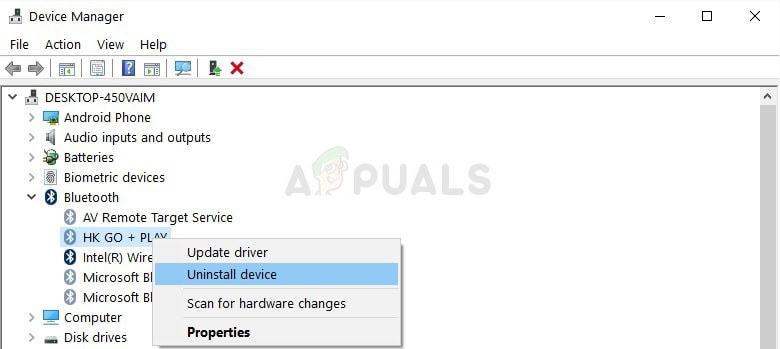
Uninstalling the Bluetooth devices - Click Uninstall and follow the prompts to complete driver removal.
- Repeat this process for any other device related to your headset (including hidden devices), then restart your system.
- After restarting, pair your headset and your computer to see if the issue is resolved.
- If you’re still having problems, go to Settings (see step 3) and select Update & Security.
- On the left, click Troubleshoot. On the right, click Additional Troubleshooters.

Navigating Additional Troubleshooters - Under “Find & Fix Other Problems,” expand Bluetooth and click Run This Troubleshooter.
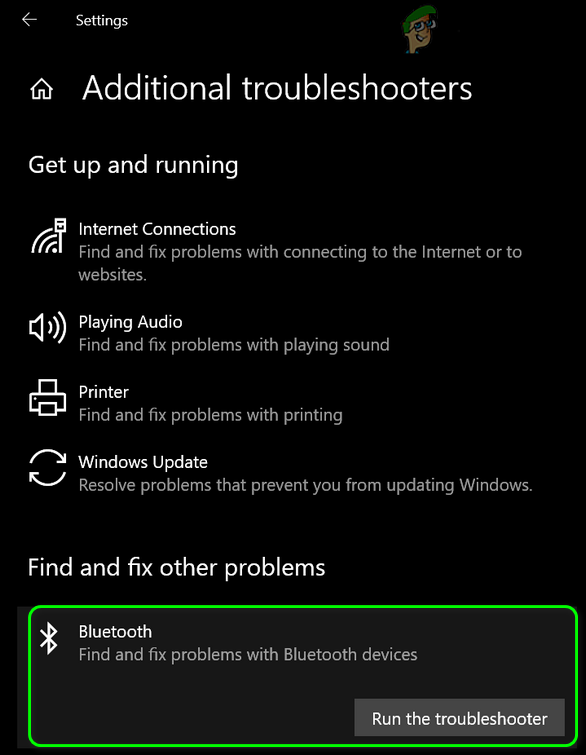
Launch the Bluetooth Troubleshooter - Follow the prompts on screen, then check if your Bluetooth headset is working properly.
- If still unsuccessful, repeat steps 3 to 5 to remove your device from Windows’ paired devices.
- Pair the devices again and wait at least two minutes before using your headset or PC.
- Now check if your Bluetooth headset functions correctly.

